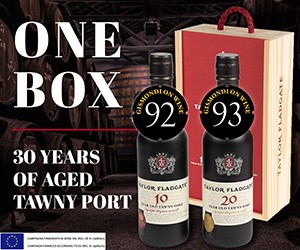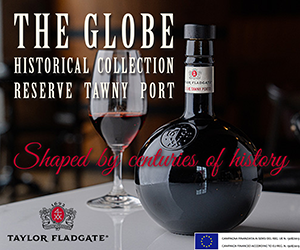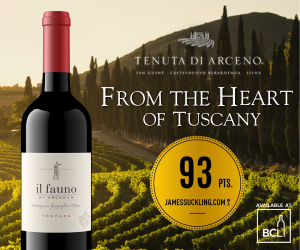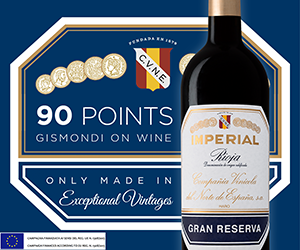Ten days in California, in early October, had me thinking about all the cabernet sauvignon grapes that were still waiting to be picked.
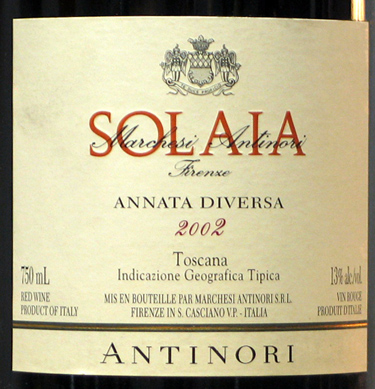
Traditionally they are among the last red grapes to be picked, although late this summer it looked as if an early harvest was in the cards.
Growers never think that way. I can't tell you how many times they have refused to discuss a harvest until it's inside the winery door. As if on cue the weather in California turned cool and wet in mid-October and, after a couple of hundred days of budding, shooting, leafing, flowering and growing, what looked to be a perfect -- if a bit small -- crop, much of the cabernet sauvignon was hanging in the balance.
Phenolic ripeness is the game in October. New Zealander and Dry River winery owner Nick McCallum puts it very well, stating: "It is in the winemakers' interests to restrain the sugar levels [i.e. not allow the final wine to become too alcoholic], to find the appropriate flavour profile [not necessarily the ripest], and to secure phenolics which are ripe enough for the wine to be considered generous but not so ripe that the wine loses the other benefits of protection against oxygen in the ageing process, nor its structure for when it is tasted."
All of the above is particularly true for cabernet sauvignon. In the relatively cool, marginal Bordeaux region, growers take some of the risk out of trying to ripen cabernet every year by blending it with other red grapes that ripen earlier, most notably merlot.
In the end it's the softer tannins and ripe fruit that win the day, although of all the red grapes out there cabernet has a bit of wiggle room when it comes to minty, savoury, menthol, garrigue flavours that often reflect its origin. By the way, the weather cleared up in Northern California last week and, for those who gambled by waiting, the results couldn't be better. This week we look at cabernet sauvignons, or at least blends that are predominately cabernet. None are shrinking violets and all call for fairly robust meat or game dishes.
We begin in South Australia with Angus the Bull Cabernet Sauvignon 2005. Look for an open generous nose of cassis and olives with bits of smoky, savoury leather. It has a much better palate this year with less of that glaring acidity that mars so many Oz reds. Look for round blueberry/cassis fruit with an undercurrent of dried herbs and mint. Break out the steaks. Well done.
Aurelio Montes is one of South America's most respected winemakers, and while Montes doesn't have the profile it should in Vancouver don't let that stop you from enjoying the Montes Alpha Cabernet Sauvignon 2005. It spends 12 months in French oak mixed with 10-per-cent merlot. Old vines are the key to low yields and perfect ripeness adding all the gloss you need. The nose is inviting, showing black fruit, vanilla, spice and tobacco. Similar flavours penetrate the palate in a smooth jacket of warm red fruits with blueberry and smoky, black liquorice in the smooth, long finish.
The Black Box Tetra Cabernet Sauvignon 2005 from Paso Robles is very tasty and it comes with a carbon footprint that is lighter than most of its competitors. Soft and easy-drinking, the nose reflects its Central Coast origins with more mint and olives than black fruit and chocolate but it's otherwise fruity and fine. It's perfectly acceptable with most grilled meat dishes. A hamburger red that doesn't quit, at an affordable price.
Serious Napa Valley cab at a not-so-serious price is Edge Cabernet Sauvignon 2005. Edge is sourced from grapes grown near St. Helena and in Napa's Oak Knoll district. Hard on the heels of the award winning 2004, the '05 is showing equally well with appealing peppery, black fruit aromas flecked with vanilla and silky, dusty, peppery, red fruit flavours.
Vintage variability forced the wine team at Antinori to use no sangiovese in the 2002 Solaia. The result is an 85/15 blend of cabernet sauvignon/cabernet franc they labelled Solaia Annata Diversa 2002. The palate is dry but round with some grainy, tight tannin and plenty of peppery, tobacco, cranberry, meaty, licorice root flavours with bits of vanilla, roasted game and leather on the finish. A fine wine from a tough vintage.
Finally, a recent stop in Paso Robles revealed no one is resting at J. Lohr, the Paso Robles producer with the No. 1-selling cabernet sauvignon (over $20) in our market: J. Lohr Cabernet Sauvignon Seven Oaks 2005. Current inventory in government stores is a staggering 3,500 plus bottles in 144 stores. The '05 continues down the toned-down oak road, blending peppery, black fruit with bits of vanilla on the nose. The mid-palate is silky smooth and no doubt contributes to its wide appeal. It's called a cabernet, but Okanagan producer might take note that 23 per cent of the blend mixes petite sirah (6), petit verdot (6), merlot (5), and 6 per cent syrah, malbec, cabernet franc and others.
ANGUS THE BULL CABERNET SAUVIGNON 2005, SOUTH AUSTRALIA
Price: $20
UPC: 00871971000029
Score: 88/100
Remarks: Blueberry/cassis fruit with an undercurrent of dried herbs and mint.
MONTES ALPHA CABERNET SAUVIGNON 2005, VALLE DEL COLCHAGUA, CHILE
Price: $27
UPC: 00715126000116
Score: 90/100
Remarks: Old vines make for a glossy red.
BLACK BOX TETRA CABERNET SAUVIGNON 2005, PASO ROBLES, CALIFORNIA
Price: $14.99
UPC: 00081434210074
Score: 86/100
Remarks: A hamburger red that doesn't quit.
EDGE CABERNET SAUVIGNON 2005, CALIFORNIA
Price: $32.99
UPC: 752183270212
Score: 90/100
Remarks: Silky with dusty, peppery, red fruit flavours and just a touch of vanilla.
ANTINORI SOLAIA ANNATA DIVERSA 2002, TUSCANY, ITALY
Price: $136
UPC: 08001935999997
Score: 89/100
Remarks: Warm, slightly chunky style that will benefit from one to three years' aging.
J. LOHR CABERNET SAUVIGNON SEVEN OAKS 2005, CALIFORNIA
Price: $23.00
UPC: 089121288122
Score: 88/100
Remarks: The mid-palate is silky smooth and no doubt why it has such wide appeal.

 quicksearch
quicksearch


